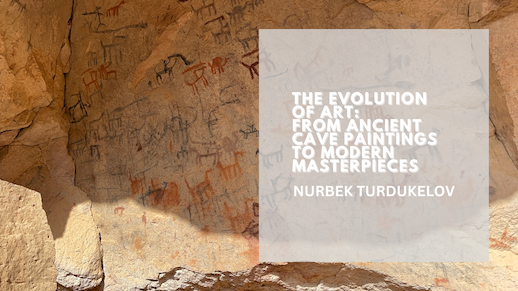Art has been an integral part of human culture and history for thousands of years. From the earliest cave paintings to the most modern art installations, art has always been a reflection of society, culture, and individual expression. Throughout the centuries, art has evolved in numerous ways, and this article explores the evolution of art from ancient cave paintings to modern masterpieces.
The earliest form of art was cave paintings, dating back to over 40,000 years ago. These paintings were found in caves across the world, including Europe, Africa, and Asia. The paintings depicted animals, human figures, and symbols, and were created using natural pigments such as ochre, charcoal, and manganese. These paintings were not just for aesthetic purposes but served as a means of communication and storytelling.
The ancient Egyptians, Greeks, and Romans also made significant contributions to the evolution of art. Egyptian art was highly symbolic, and their paintings and sculptures depicted gods, pharaohs, and scenes from everyday life. Greek art, on the other hand, focused on human form and anatomy, and their sculptures were considered the epitome of beauty and grace. Roman art was influenced by both Egyptian and Greek art and was characterized by realism, portraiture, and intricate details.
The Middle Ages saw the emergence of Christian art, which was used to educate and inspire people about the Christian faith. Christian art included illuminated manuscripts, paintings, and sculptures, and was characterized by a focus on religious themes and figures.
During the Renaissance period, art underwent a significant transformation. Renaissance artists were interested in exploring human emotions and the human experience. They used perspective, light, and shadow to create realistic and lifelike images. Renaissance art also saw the emergence of new art forms such as oil painting, frescoes, and engravings.
The 19th and 20th centuries were marked by a wide range of artistic movements such as impressionism, cubism, surrealism, and abstract art. These movements were characterized by a departure from traditional art forms and a focus on individual expression and creativity. Artists used new techniques, such as collage, photomontage, and ready-made objects, to create new forms of art.
Today, modern art continues to evolve and push boundaries. Contemporary artists use a wide range of mediums, including digital art, installations, and performance art, to express their ideas and emotions. The concept of art has also evolved, with artists exploring new themes and concepts such as social justice, identity, and technology.
Art has come a long way from its humble beginnings in ancient cave paintings to the complex and diverse forms of art that we see today. The evolution of art has been marked by various artistic movements, cultural influences, and individual expression. Art has always been a reflection of society, culture, and the human experience, and it will continue to evolve and inspire generations to come.

